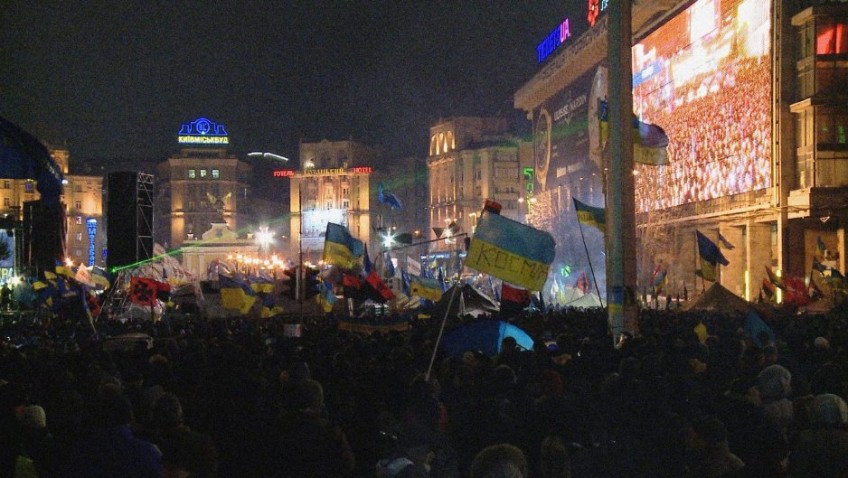Maidan means independence in Ukrainian and is short for Kiev’s Independence Square. Maidan is also the site of the uprising against Putin-backed President Victor Fedorovych Yanukovych after his rejection of a pending agreement with the EU in November 2013. It ended on 21 February 2014, when Yanukovych fled the capital, but Director Sergei Loznitsa is not interested in establishing the facts. He wants to put the viewer in the middle of crowds of real people making history.
Director Sergei Loznitsa might have seen the parallel between the progress of this protest movement and a film production set itself. There is the importance of catering, a doctor on stand-by for injury, a lot of hanging around and then an intense period of action when the adrenalin is going and the world is watching. Unlike most films shot during revolutions or uprisings, the cinematography is carefully framed and beautiful while the attention to detail is captured with a painterly hand.
Loznitsa and Ukrainian cinematographer Serhiy Stefan Stetsenko) plant themselves inside the scene of the Ukrainian uprising and let their cameras roll without the distancing techniques of voiceover commentaries, interviews or, except at key points, captions. Their footage is supplemented by bystander footage submitted on a continual basis.
In December 2014, there is a party spirit around Maidan with plenty of catering, singing and high spirits. The film begins with a long sequence in which a huge crowd, sheltered from the bitter cold by just coats, hats and scarves, sings the national anthem. There are an equal number of men and women (there are even children) on the streets and the tension is felt although we do not see the police.
We are soon in a cavernous hall where earnest volunteers run around with face masks and sanitary gloves preparing soup and sandwiches. When a worker removes his glove to talk on his phone, he is told off. This scene evokes Camus’s The Plague, by suggesting that even in times of crisis, daily activities and being human are all the more important.
In January the battle turns bloody with clashes between the pro-European activists, armed with cycle helmets, stones and Molotov cocktails and the riot police who use tear gas, water cannons and then guns against the protestors. What impresses is the organisation of the uprising. People are directed to specific locations where the defences are weak, and we hear calls for equipment or expertise. There is a continual call for doctors in Kiev City Hall, and then calls for anyone with medical knowledge.
We do not see many women fighting (at one point they are ordered to go home), but we learn that 100 protestors were killed by police, including one young couple who leave behind a 3-year-old daughter. Hundreds more people have been wounded. We attend a massive outdoor funeral where people are packed together like sardines to pay their respects; the scene made even more solemn by the chanting of a beautiful Gregorian choir.
Loznitsa does not make it easy on us. There is virtually no dialogue, the takes are long and not a lot happens. We do not meet any individuals, only a determined, courageous crowd. Suddenly there are explosions, but it’s difficult to see in the dark and know what is going on. And that is the point. Occupying a public square and waiting for history to unfold is like that.
Joyce Glasser – MT film reviewer




